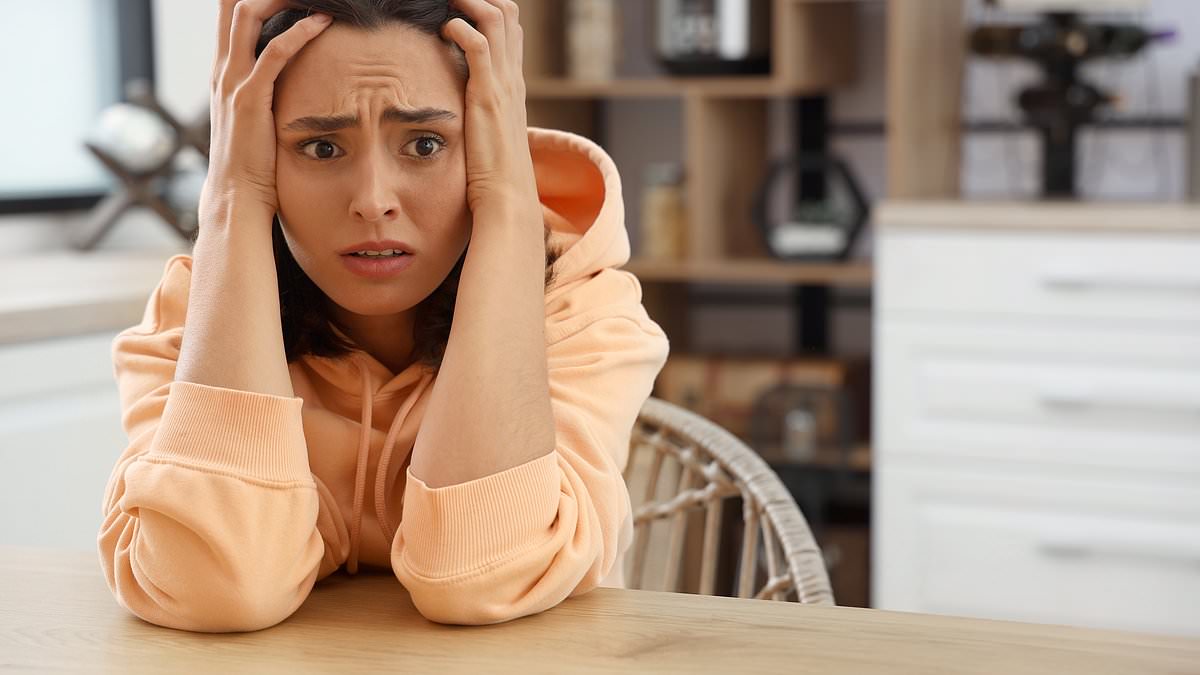By Editor,Emma Gritt
Copyright dailymail

15 minute routine: How to beat anxious thoughts, according to a therapist
READ MORE: Why your favourite drink is making your hair fall out
By EMMA GRITT, ASSOCIATE HEALTH EDITOR
Published: 10:04 BST, 3 October 2025 | Updated: 10:04 BST, 3 October 2025
A knot in the pit of your stomach; a racing mind; sweaty palms; or just a looming sense of dread: However they manifest, experiencing anxious thoughts is never pleasant.
But while they can quickly get out of hand—a niggling concern you didn’t turn the oven off can mutate into a cold fear you have burnt down your home, if not every building in a 1.5 mile radius, a lá the Great Fire Of London—there are ways to nip them in the bud.
Everyone suffers from some level of anxiety, it’s part and parcel of the human experience, but when passing worries become all consuming, it can become a recognised mental health condition called Generalised Anxiety Disorder (GAD).
It is estimated that in 2024, around 8.6 million people in England were prescribed antidepressants, which are also often used to treat symptoms of anxiety.
Furthermore, dual diagnoses of anxiety and depression are not uncommon.
Research released last week found that almost 650,000 people were claiming Personal Independence Payments (PIP) for anxiety and mood disorders in July.
With the UK currently in the grip of what can only be described as an anxiety epidemic, having the tools to quieten your mind have never been more valuable—even if you don’t have a formal diagnosis of the condition.
Senior therapist Sally Baker compares troubling thoughts to being similar to ‘seeds’—and unfortunately, the conditions they need to grow are present in abundance in our minds.
Anxious thoughts can quickly snowball—but there are ways to nip them in the bud
She told the Daily Mail: ‘The more attention you pay to your anxious thoughts, the more you are giving them sunlight and moisture.’
It’s hard to not focus on a worrying thought, or get lost in the ones that come after it, but with time and practice, it is possible to quash them shortly after they appear.
Ms Baker explained that—thankfully—not only do we have the conditions anxiety needs to bloom, weed-like, but we also have the tools to cut back its vines and dig it out at the root, stopping it from sprouting again and again.
She said: ‘When you realise you are spiralling into anxiety, it’s vital to interrupt your thinking.
‘There are several ways you can do this: You can make a noise, either silently inside your head, or if you can, say it out loud.
‘This signals that it was an unhelpful thought, and interrupts that thought.’
She also suggested two simple ways to force a stop in your nervous system.
‘Go to a window or doorway and breathe slowly and deeply for several breaths, or if you can, run up a flight of stairs.’
Anxiety can also manifest physically, causing sweats, heart palpitations and panic attacks
Whether the action you take is mental or physical, Ms Baker says that it is the first step to stopping an anxious thought.
She added: ‘It’s essential to take action instead of running the same program in your mind that always ends with the same results.
‘Think about how a music box gets wound up and can only play one tune, and the dancer can only do one dance.
‘If the anxious thinking is not interrupted, it will always end the same way—going round and round in circles.’
WHAT IS ANXIETY?
Anxiety is a normal part of life that affects different people in different ways at different times.
Whereas stress can come and go, anxiety often persists and does not always have an obvious cause.
Along with depression, anxiety is among the most common mental-health condition in the UK, affecting 8.2million people in 2013 alone.
Around 40million adults suffer from the condition in the US every year.
Anxiety can make a person imagine things in their life are worse than they are or that they are going mad.
Although it evolved as part of the ‘fight or flight’ mechanism in our caveman days to avoid danger, anxiety can be inappropriately activated in everyday life when stress builds up.
It can have a clear cause, such as moving house or having surgery. However, sometimes little life events build up until a person is unable to cope, with anxiety then taking them by surprise.
Physical symptoms can include:
Increased heart rate and muscle tension
Hyperventilation and dizziness
A tight band across the chest
Tension headaches
Hot flushes
‘Jelly legs’
Feeling like you are choking
Tingling in the hands and feet
Some psychological symptoms are:
Thinking you are going mad or losing control
Thinking you may die or get ill
Feeling people are staring at you
Feeling detached from others or on edge
Treatment often involves counselling or cognitive behavioural therapy.
Activates like yoga, exercise, reading and socialising can help to manage anxiety.
Advertisement
However, if these short sharp shocks aren’t enough to silent the gnawing angst in your head, Ms Baker—who specialises in using EMT tapping therapies and hypnosis to help her clients overcome feeling ‘stuck’ in their lives—offers up a more intensive plan of attack.
This can be particularly useful if you are suffering from a panic attack, or can feel yourself edging towards one—and the entire process can take less than 15 minutes.
She said: ‘I tell my clients to use the I.C.E. Protocol, which stands for Identify, Calm and Exchange.’
The first step is to identify what it is which is making you feel anxious, and at the same time make a note of what emotions you are feeling and let yourself feel where that anxiety sits in your body.
‘Ask yourself, is it in your head, jaw, neck, shoulders, heart, chest, stomach, legs or skin, or several of those places?
‘What you’ve done is identify something that causes you to feel anxious, and as you’ve been thinking about it, you’ve even felt the sensations in your body attached to that anxiety,’ she said.
Once the concern and its location has been identified, it’s time for step two, Calm.
Ms Baker explained that this involves ‘stepping outside of that feeling’, and the easiest way to do that is by focusing on two points and the space between them.
She explained: ‘To do this, find a single point in front of you, preferably about head height.
‘It could be the top of a set of shelves, a corner of a picture or a detail in a pattern within your line of vision.
‘A moment ago, when you identified the issue that causes you anxiety, your body chemistry and how your body functions adjusted themselves to support that anxiety—you thought it and then you felt it.
‘Now, you are focusing on something simple, so the chemistry in your mind and body adjusts and changes.
‘After a moment of observing the first point, shift your attention to the second point you have chosen, not too far away from the first.’
After switching your attention between the two points several times, and feeling your stress levels lessen, Ms Baker says the final step of this stage is to focus on the space between them—and the emptiness.
‘When you observe this space, you’re observing nothing. When you observe this space, your body chemistry follows your mind,’ she said.
‘Looking at this space means there is nothing to react to.’
The last step of I.C.E is E for Exchange.
With your mind now quieter, return to the exact thought you started with which was causing you such intense anxiety.
Ms Baker says that ‘the old upset chemistry will be exchanged with a new calm chemistry you generated in the previous step’.
If something else has come to mind in its place, don’t panic, simply repeat the process again.
Share or comment on this article:
15 minute routine: How to beat anxious thoughts, according to a therapist
Add comment



